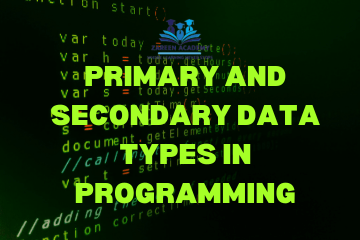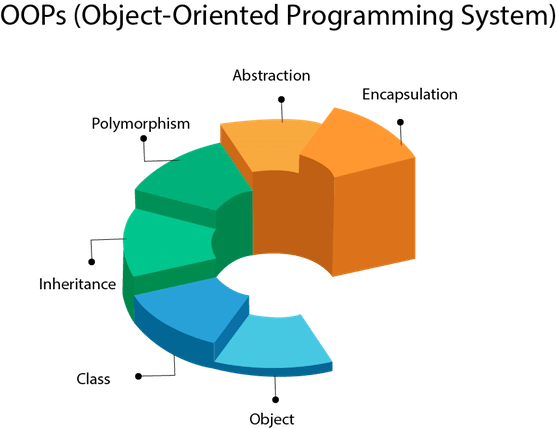OOP in Python:
Object-Oriented Programming (OOP) is a powerful programming paradigm that provides a structured approach to software development. It focuses on creating objects, which are instances of classes, and leverages concepts such as inheritance, encapsulation, polymorphism, and abstraction. Python, a versatile and widely used programming language, fully supports OOP principles. In this article, we will delve into the core concepts of OOP in Python, exploring classes, objects, inheritance, polymorphism, and encapsulation, and showcase how these concepts enhance code organization, reusability, and maintainability.
- Classes and Objects:
In Python, a class serves as a blueprint for creating objects. It defines the attributes (data) and methods (functions) that encapsulate the behavior of objects belonging to that class. Objects, on the other hand, are instances of classes, representing specific entities or concepts. For example, a “Car” class may have attributes such as “make,” “model,” and “year,” as well as methods like “start_engine” and “accelerate.” Objects created from this class will have their own unique values for these attributes and can perform the defined actions.
- Inheritance:
Inheritance is a crucial aspect of OOP that allows the creation of new classes based on existing ones. It enables code reuse and promotes the “is-a” relationship between classes. In Python, a class can inherit attributes and methods from a parent class, referred to as the superclass or base class. The derived classes, also known as subclasses, inherit the properties of the superclass and can extend or modify them as needed. This feature reduces redundancy and enhances code organization. In Python, inheritance is achieved using the syntax: class DerivedClass(BaseClass):.
- Polymorphism:
Polymorphism is the ability of objects to take on different forms or exhibit different behaviors based on the context in which they are used. It allows code to be written that can work with objects of different types, promoting flexibility and code extensibility. Python supports polymorphism through method overriding and duck typing. Method overriding involves redefining a method in a subclass to provide a specific implementation, while duck typing allows objects to be treated as belonging to a specific class based on their behavior, rather than their explicit type.
- Encapsulation:
Encapsulation is the process of bundling data and methods together within a class, and controlling access to them. It provides data security, maintains code integrity, and allows for controlled modifications. In Python, encapsulation is achieved by defining attributes as either public, private, or protected. Public attributes can be accessed and modified directly, private attributes are indicated by a leading underscore and are accessed using getter and setter methods, and protected attributes are indicated by a leading underscore and can be accessed within the class and its subclasses. Encapsulation helps to prevent accidental modifications and supports code maintainability.
- Abstraction:
Abstraction is the process of simplifying complex systems by focusing on the essential aspects while hiding the unnecessary details. It allows developers to create abstract classes and interfaces that provide a common structure and behavior for a group of related classes. In Python, abstract classes can be created using the abc module, and interfaces can be implemented using abstract classes or through duck typing. Abstraction helps in code organization, reduces code duplication, and facilitates the creation of modular and extensible systems.
Conclusion:
Python’s support for Object-Oriented Programming provides developers with a powerful set of tools to design and build complex software systems. By understanding and utilizing concepts such as classes, objects, inheritance, polymorphism, and encapsulation, developers can create code that is more modular, reusable, and maintainable. Python’s syntax and flexibility make it an ideal language for implementing OOP principles, allowing developers to focus on solving problems efficiently while maintaining clean and structured code. With its versatility and support for OOP, Python continues to be a popular choice among developers for a wide range of applications.
Object-Oriented Programming (OOP) is a powerful paradigm that provides a structured approach to software development. Python, a versatile and widely used programming language, fully supports OOP principles. By leveraging concepts such as classes, objects, inheritance, polymorphism, and encapsulation, Python empowers developers to create modular, reusable, and maintainable code. In this article, we will explore the core OOP concepts in Python, their implementation, and how they enhance code organization and efficiency.
- Classes and Objects:
In Python, a class serves as a blueprint for creating objects. It defines the attributes (data) and methods (functions) that encapsulate the behavior of objects belonging to that class. Objects, on the other hand, are instances of classes, representing specific entities or concepts. To define a class in Python, you use the class keyword. For example:
class Car:
def __init__(self, make, model, year):
self.make = make
self.model = model
self.year = yearprint(“Engine started.”)
print(“Accelerating…”)
In this example, the Car class has attributes like make, model, and year, and methods like start_engine and accelerate.
- Inheritance:
Inheritance is a fundamental concept in OOP that allows the creation of new classes based on existing ones. It promotes code reuse and fosters the “is-a” relationship between classes. In Python, a class can inherit attributes and methods from a parent class, known as the superclass or base class. The derived classes, referred to as subclasses, inherit the properties of the superclass and can extend or modify them as needed. This reduces redundancy and enhances code organization.
To define inheritance in Python, you indicate the superclass in parentheses after the subclass name during class declaration. For example:
class ElectricCar(Car):
def __init__(self, make, model, year, battery_capacity):
super().__init__(make, model, year)
self.battery_capacity = battery_capacityprint(“Charging…”)
In this example, the ElectricCar class inherits from the Car class and adds an additional attribute battery_capacity and a method charge.
- Polymorphism:
Polymorphism enables objects of different classes to be treated as objects of a common superclass. It allows for flexible and extensible code that can work with objects of different types. Python supports polymorphism through method overriding and duck typing.
Method overriding involves redefining a method in a subclass to provide a specific implementation. The subclass method overrides the implementation of the same method in the superclass. For example:
class SportsCar(Car):
def accelerate(self):
print("Accelerating at high speed!")
In this example, the accelerate method is overridden in the SportsCar subclass to provide a specialized implementation.
Duck typing is a dynamic typing concept where the type of an object is determined by its behavior rather than its explicit type. If an object behaves like a specific class, it can be treated as an instance of that class. This allows for flexibility and loose coupling between objects.
- Encapsulation:
Encapsulation is the process of bundling data and methods together within a class and controlling access to them. It promotes data security, code integrity, and controlled modifications. In Python, encapsulation is achieved by defining attributes as either public, private, or protected.
Public attributes can be accessed and modified directly. Private attributes are indicated by a leading underscore (e.g., _attribute_name) and should not be accessed directly from outside the class. However, Python enforces this convention through naming conventions, and accessing private attributes is still possible. Protected attributes are indicated by a leading underscore (e.g., __attribute_name) and can be accessed within the class and its subclasses.
class Person:
def __init__(self, name, age):
self._name = name
self._age = ageprint(f”Name: {self._name}, Age: {self._age}“)
In this example, the attributes _name and _age are marked as protected, indicating that they should be accessed and modified through class methods, such as display_info.
- Abstraction:
Abstraction is the process of simplifying complex systems by focusing on essential aspects while hiding unnecessary details. It allows developers to create abstract classes and interfaces that provide a common structure and behavior for a group of related classes. Python supports abstraction through abstract base classes (ABCs) and interfaces.
ABCs can be created using the abc module in Python. They define a blueprint for subclasses to implement specific methods. By defining abstract methods in a base class, you enforce that subclasses provide an implementation for those methods. This ensures consistency and enables polymorphic behavior.
from abc import ABC, abstractmethod
class Shape(ABC):
def area(self):
pass
class Rectangle(Shape):
def __init__(self, width, height):
self.width = width
self.height = height
def area(self):
return self.width * self.height
In this example, the Shape class is an abstract base class with an abstract method area(). The Rectangle class inherits from Shape and provides an implementation for the area() method.
Conclusion:
Python’s support for Object-Oriented Programming enables developers to create modular, reusable, and maintainable code. By leveraging classes, objects, inheritance, polymorphism, encapsulation, and abstraction, developers can design elegant solutions to complex problems. Understanding these OOP concepts and their implementation in Python is crucial for maximizing code organization, efficiency, and extensibility. Python’s simplicity and versatility make it a preferred language for implementing OOP principles, catering to a wide range of application domains. stay connected with ZareenAcademy.



0 Comments